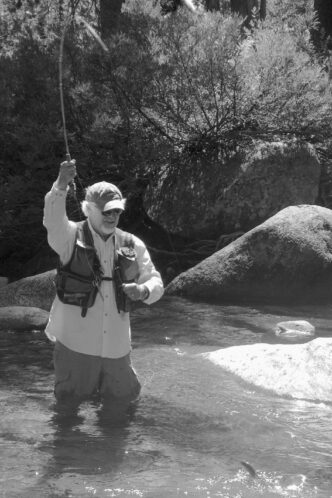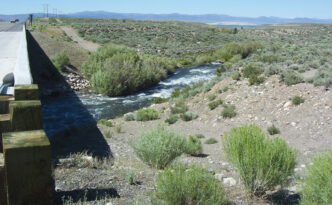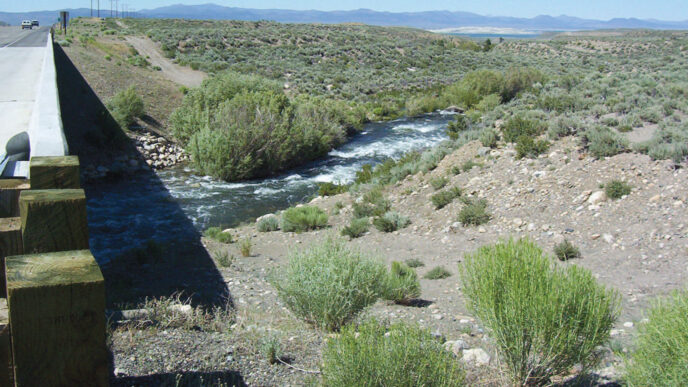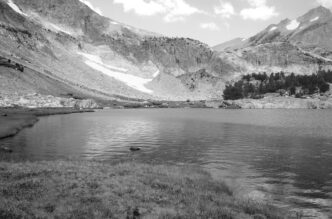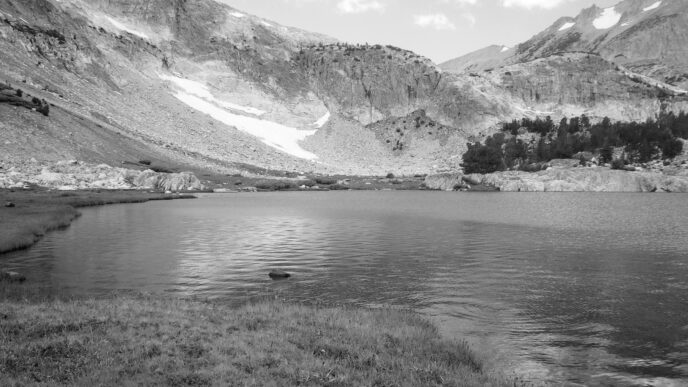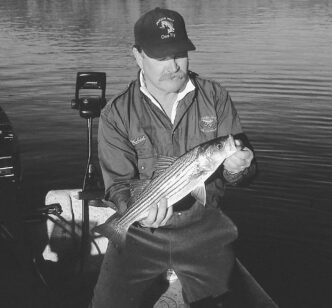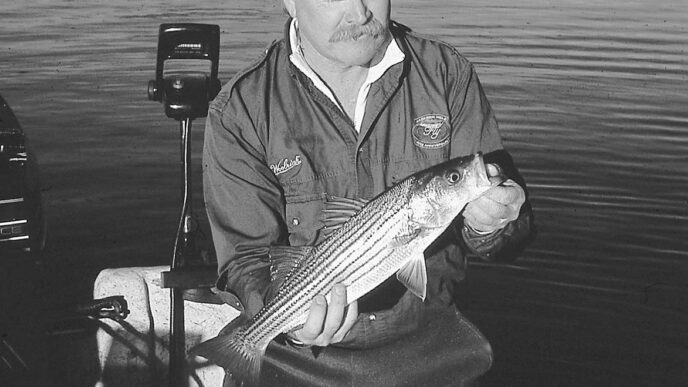But midway into yosemite national park along Highway 120, also known as Tioga Pass Road, you’ll come across one of my favorite trout streams in the area — Yosemite Creek. This beautiful little stream gathers its headwaters from the Grant Lakes near the heart of the park and flows first southwest and then southeast through a granite corridor of about twelve miles or more to where it joins waters with the Merced River. Along its course, Yosemite Creek drops over 2,400 feet into Yosemite Valley, creating one of the spectacular attractions of the park, Yosemite Falls.
Much has been written of the many rivers, creeks, and lakes of Yosemite National Park, including articles on the Dana and Lyell Forks of the Tuolumne River that I’ve contributed to California Fly Fisher singing the praises of these two great streams. I still revisit these streams a few times a year, and I’m happy to say that I continue to get that same high I experienced when I first fished them, finding them as clean and healthy as ever.
Yosemite Creek is another of the many spots in the park that I’ve fished over the years. One of the notable aspects of the stream is the ease in accessing water that is situated near the road. If your mobility isn’t once what it used to be, this can be a good place to wet a line. Conversely, if you seek solitude, you can find it with a hike along Yosemite Creek.
Where to Fish
Because it’s such a long creek, there’s certainly no shortage of water to explore. I believe it’s more a matter of finding a convenient access point and then heading for the good water, allowing your energy and time to determine where you begin fishing. The section of Yosemite Creek I like to fish flows between Yosemite Campground and upstream where it meets Highway 120, a distance of about two miles. Having never stayed at the campground, the way that I reach the water is by following the Ten Lakes Trail, which begins near the bridge on Highway 120 that crosses the creek. I follow the trail downstream toward Yosemite Campground for about a mile or so to where it intersects the creek. If you take this trail, you’ll find that it’s a fairly easy hike downstream, but don’t be concerned if you don’t actually see the creek as you hike. The trail leads away from the water, skirting and atop some granite outcroppings before it bends back through the pines to the water. Once you arrive at the creek, you can wade across easily and continue to follow the trail down to the campground and beyond, if you choose.
As for the fishing here, I’ve found the flows from the trail crossing downstream to the campground to be a bit gentler, because the land levels off through this section. There are several large pools and glides to fish for the mile or so to the campground, and it can be productive water. The only glitch that I’ve encountered fishing this area is that you’re apt to run into other anglers coming upstream from the campground, or, as I’ve seen, sunbathers along the stream. I’ve never encountered crowded conditions on the creek, upstream or downstream, but if it’s solitude you’re really after, I wouldn’t advise fishing downstream too close to the campground. For this reason, I prefer to fish upstream from where the trail meets the creek.
Another approach to the stream, and one that I enjoy as well, is to park near the bridge on the eastern side of the stream. Because of the creek’s close proximity to the road at this point, access is much easier, making it ideal for those who, like me, have difficulty these days tackling the longer, more demanding hikes to fish the more remote waters in the park.
There’s a well-marked rest area off the road here where you’ll find about ten picnic tables clustered along the creek. A word of caution is in order here, though. On my last visit to Yosemite Creek, there was a bear warning posted on all the picnic tables, each with a photograph of a mother bear and her two cubs sitting on a table, happily devouring a lunch that included a loaf of Wonder Bread and who knows what else. The photo and the flyer were a bit sobering. This particular warning offered sound advice about bear encounters, recommending that if you see a bear approaching, yell at it and make a lot of noise with the hope that it will avoid you. There was also a notice of a large fine for anyone enticing a bear with food.
I’m the sort of person who would rather err on the side of caution, and the message came through very clearly to me. On a recent trip to Yosemite Creek, my wife and I, from the comfort and safety of our car, did see a large black bear running down the highway and bolting into the woods not far from the water. Venturing along the creek here, I figure it’s a good idea to keep the liverwurst sandwich out of your vest pocket and locked in the car for later consumption. It couldn’t hurt.
Having said all that, I’ve found this rest area is a nice place to ease my bones and have lunch after angling for a few hours. When I fish here, I usually hike half a mile or more downstream and work my way back to the car. There’s a fair path to follow along the creek for some of the way, but the trail does tend to vanish at times, or maybe I just have difficulty following it. At any rate, I pick my way downstream over the granite boulders along the bank and through the pines without too much difficulty, with or without the help of the path. And quite honestly, you don’t usually need to hike very far here to get into good fishing. For this reason, I think of it as a great place to fly fish for the AARP generation, of which I am a member. On a recent trip to the creek, I had a great outing, taking several native brookies within sight of the picnic tables. You can’t beat that.
This upper part of the creek near the roadside rest area has what I believe is the best water to fish. Because the creek drops a bit through this section, you’ll find a series of deeper plunge pools and riffles as the water picks up energy flowing downstream. The creek is filled with heavy boulders and fallen logs, adding to its character and creating great habitat for the trout. I find the wading isn’t too difficult, with a solid creek bottom of sand and rock of the nonslick variety making for good footing, although it does often require scrambling over large boulders and logs to position yourself for casting.
On one trip, I fished a relatively short distance upstream from the bridge, following the Ten Lakes Trail toward the Grant Lakes, and found the water in this section to be composed of larger pools and glides, because the creek runs over fairly level ground here, making it very similar to the water about two miles downstream, near the campground. I took fish in this upper section, but prefer the tumbling action of the creek below the bridge. I suspect the character of the creek changes the farther upstream one hikes toward the Grant Lakes, but I’ll have to explore that another day.
Gearing Up
I like to take a shorter rod with me to Yosemite Creek, because long casts are the exception, rather than the norm there. Most of the casts you’ll make will be within 25 feet or so. A 6-foot cane rod that I’ve built for fishing the smaller Sierra streams, loaded with a 3-weight double-taper floating line, has become my favorite outfit for this creek and for other waters in the park, but I’ve also used a 7-foot rod and a weight-forward 4-weight floater, and each has served just as well. To be really successful here, as in most small streams, it’s more important to pay attention to the fundamentals, such as having good control of your line and fly and mending when needed for drag-free drifts.
You’ll find that the brook trout are usually plentiful in Yosemite Creek, but they’re not always a pushover. They can be selective at times, and leader shy, as well, making the fishing interesting. More times than I’d like to admit, I’ve had trout rise to the fly and reject it for reasons known only to them. (Wrong pattern? Wrong size? Drag? Lousy job of tying?) Usually this takes place in the slower sections of the creek, where they have a chance to inspect the fly carefully. I’ve moved down to a 7X tippet on occasion, especially in low-water years, and have noticed a positive difference in the shift. But most often I fish a 7.5-foot leader with a 6X tippet and find that to be just about right for the job.
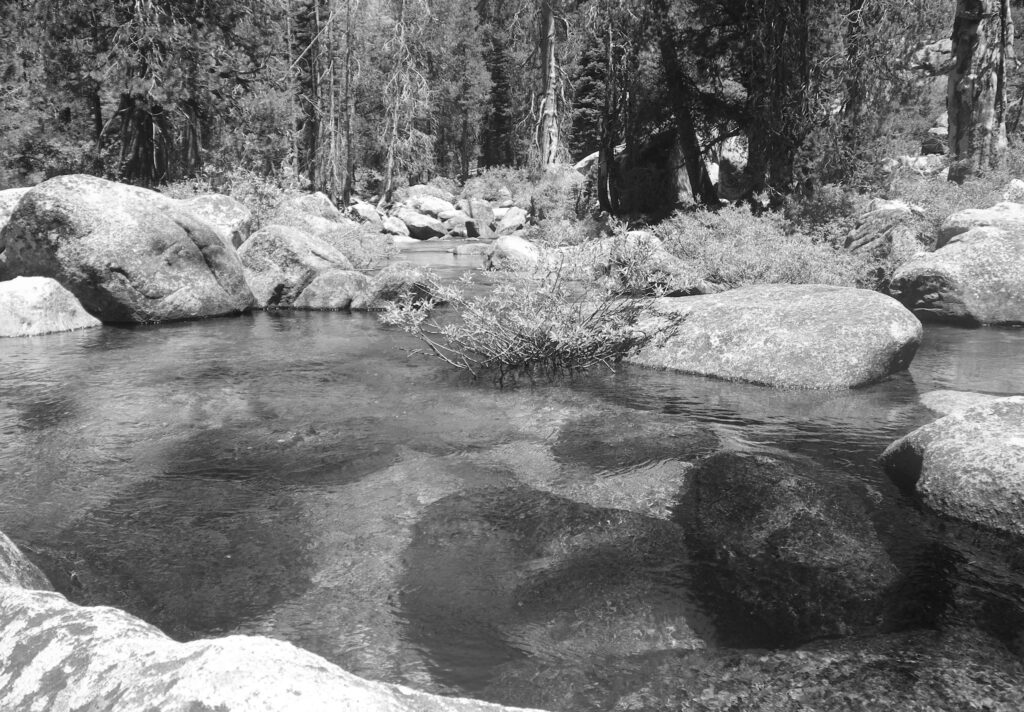
As for other gear, included in your vest should be a poncho or raincoat. I’ve been caught in Yosemite in thunderstorms and was very glad I had the foul-weather gear along. What begins as bluebird weather in the morning can turn ugly very quickly in the park.
I don’t wear waders on Yosemite Creek or on any of the other creeks I fish in the park. I feel they’re extra baggage and cumbersome and prefer to hike in my wading boots with a good pair of neoprene booties and wade the creek wet, wearing lightweight long pants of nylon and polyester. I find it’s a comfortable way to hike and fish. I’ve never felt the need to wade above my waist in this stream (I’m not a risky wader these days), even when positioning myself for just the right cast.
On a final note, wear your favorite hat and carry sunscreen, bug spray (the mosquitoes can be dense here at times), and a bottle or two of water.
Flies
Regarding flies and patterns, there’s no big mystery here. The standard Parachute Adams in size 16 or 18 should hunt all day if you let it. Like most experienced tyers, I think we all like to bring something different to the standard patterns we tie — some of us are always searching for a better mousetrap — so I tie my parachute Adams a bit differently from most tyers, having picked up a tip from a good friend. He turned me on to using a Tiemco 2487 hook for parachute patterns. This particular hook is designed for caddis pupae and emergers and works to an advantage for this particular pattern. Unlike a standard parachute pattern, tying this Adams as an emerger brings the tail and body of the fly down into the film of the water, giving it an even lower profile than a standard parachute. I’ve found that often fish are more willing to come to an emerger pattern than to a standard parachute pattern or a traditional dry that is floating higher and drier. With this in mind, I’ve been tying many of my parachute patterns as emergers. For the posts on my parachute patterns, I like using a turkey flat that I’ve cut into a V shape, folding the tips together and extending them just beyond the eye when laid flat against the hook shank. I build a small node of thread just ahead of the post to keep it upright, leaving enough room between the post and the eye to tie off the hackle and to build a head. I then wrap the base of the post — about ten wraps for those who count — and wind the thread back into the bend of the hook. For a tail, I use soft, webby grizzly hackle. For this pattern, the tail material shouldn’t be stiff, because it isn’t intended to support the fly. Just the opposite is true — it’s meant to absorb water, acting as a trailing shuck for the fly when wet. I then dub in my gray body material. My rule of thumb when tying an emerger’s body is “Less is best.” I don’t want to create a chubby fly, but that’s just me. After the body’s dubbed and wound, most of the time I just tie in a brown hackle and forego the grizzly hackle that the traditional pattern calls for, spiraling it around the base of the post in parachute fashion. Six or seven wraps are usually plenty. With too many wraps, the hackle has a tendency to want to ride up the post, and that can cause unraveling later when the fly is being fished.
If an Emerging Parachute Adams isn’t to the trout’s fancy that day, or if you like to mix things up, you might try an attractor pattern such as a Royal Wulff in size 16 or 18 or a hair-wing fly such as a Wright’s Royal in the same sizes. All have worked here for me at times. Be sure to bring a supply of your favorite ant and beetle patterns along, as well. You’ll see the naturals along the creek. I’ve had success with these terrestrials, on some occasions going down to a 7X tippet in years when the water was low. To my recollection, I’ve never offered a nymph in the creek, because I find the dry-fly action is plenty satisfying, with the fish very willing to feed off the surface. But having said that, I usually fish the creek later in the summer, so a nymph could produce very well earlier in the season, when the water is higher.
A Time for Reflection
For oft, when on my couch I lie
In vacant or in pensive mood,
They flash upon that inward eye
Which is the bliss of solitude. . . .
For the poet William Wordsworth, it was a spectacular vision of thousands and thousands of daffodils he gazed upon years before that gave him great pleasure and created such a lasting memory. Many of my own reveries of nature begin with the beauty of Yosemite. For me it’s the water cascading around the granite boulders, the enveloping fragrant pines, and of course the darting, rising brook trout — all these create special memories of Yosemite Creek. Two or three outings a year here — together with trips to other waters in the park —help carry me through those days when I’m not fishing and it becomes that solitary time for reflection.



